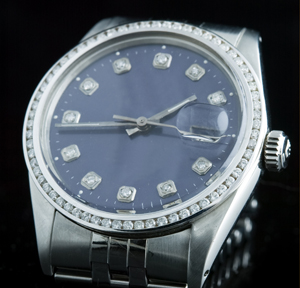Surveys
Most Luxury Purchases Done In-Store Rather Than Digital - Study

One often reads about how more and more commercial transactions take place online. Even the fine art market has digital auctions. But it appears that most purchasers still want to be in a store when they make the deal, a report says. The study paints a broadly positive picture of the luxury sector worldwide.
(Editor’s note: This report was issued before the virus outbreak
in China, bringing with it disruptions and closures. North
Asia has become an important driver of the global luxury market
in recent years so it will be interesting to see what the impact
will be.)
A survey of more than 3,100 affluent consumers from nine
countries shows that the majority of them still want to buy their
goods and services in a store rather than going online,
suggesting that the digital revolution hasn’t fully
materialized.
The findings come from the New York-based Luxury Institute,
in its State of the Luxury Industry 2020 report. Minimum
annual income for US respondents was $150,000, and those from
other countries represent similarly exclusive percentiles of
income distribution in local currency within the top 10 per cent
of household incomes.
The report said the market is broadly buoyant, helped by positive
macroeconomic conditions.
Stores remain the dominant retail channel for luxury goods.
Affluent consumers report more than two-thirds (68 per cent) of
purchases taking place in-store, and those in France (77 per
cent) and Canada (76 per cent) are most likely to buy luxury
goods at a brick-and-mortar location. Regarding preferred
channels for making purchases, 62 per cent of consumers worldwide
indicate an in-store preference, 14 per cent prefer online, and
nearly one in four (24 per cent) have no preference.
“Barring any black swan events, the state of the luxury goods and
services industry remains strong for 2020,” Luxury Institute CEO,
Milton Pedraza, said. Asked by this news service about the
Chinese virus outbreak in recent days and the disruptions to
travel, he said: "There is no question that the coronavirus
outbreak in China is a `Black Swan' event. How big of an event
remains to be seen, but it will definitely dampen the luxury
goods and services industry at least for the first half of 2020.
We already see some effects on LVMH results."
The wording of the LI report was generally
upbeat. “Regardless of the channel, the macro environment is
highly hospitable for luxury. However, for brands to truly
capitalize on the abundant opportunity they need to master an
understanding of their customers’ stated and unstated needs and
desires, and execute brilliantly, treating each client as an
individual human being. This is what we mean by omni-personal
relationships. That skill is in high demand, yet, in low supply
right now in luxury. Brands that aspire to high performance in
2020 need to master the skills with extreme urgency.”
Consumers in the UK (20 per cent), Italy (18 per cent) and US (16
per cent) show the highest online preference. Those in South
Korea (82 per cent) most widely prefer the in-store experience
followed by in-store preference shoppers in France (71 per cent)
and China (70 per cent), the report said.
Among luxury goods, the categories showing the highest
proportions of consumers spending more are beauty and skincare
(48 per cent), fashion apparel (47 per cent), automotive (45 per
cent), jewelry and watches (44 per cent), and shoes (44 per
cent). Categories in which consumers are most disposed to be
cutting back are art (9 per cent), wine and spirits (7 per cent),
and handbags (7 per cent). In each of these categories, however,
the propensity for higher spending is far greater than the
likelihood of spending less.
Top reasons offered by consumers for purchasing luxury goods are
that they last longer and keep their value (45 per cent), and
that they are a reward for hard-earned success (42 per cent).
High concentrations of consumers in Italy (51 per cent), China
(46 per cent), France (44 per cent), and Germany (42 per cent)
say that they like to surround themselves with “beautiful,
exclusive, and unique products.”